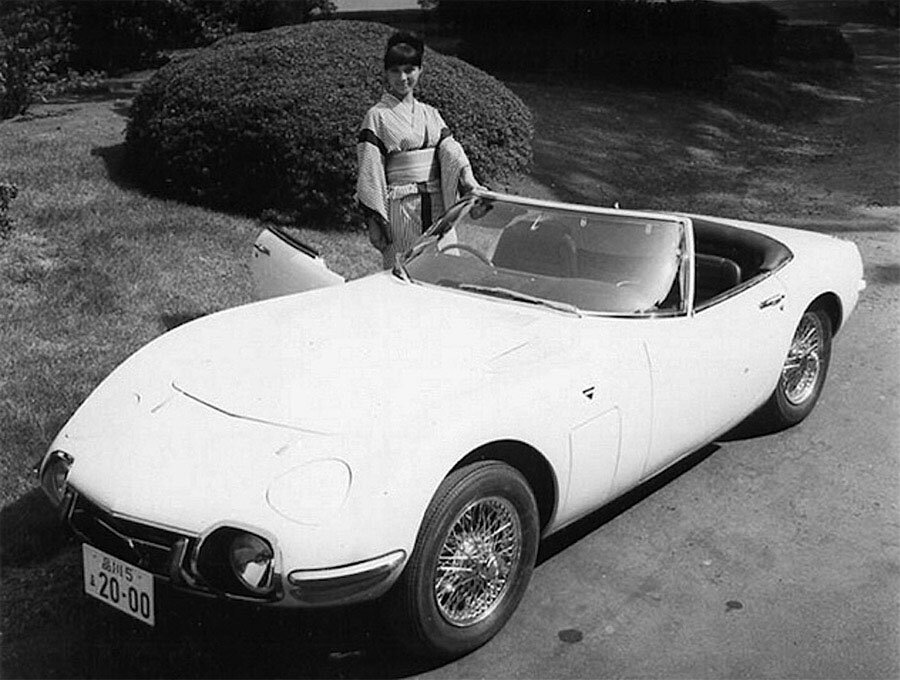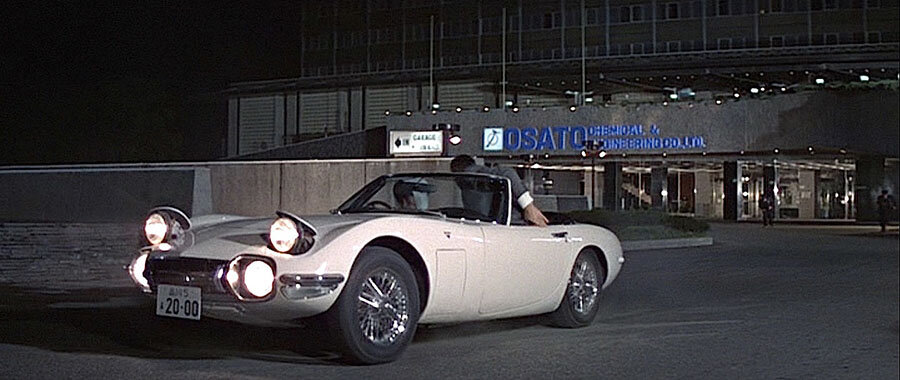Guide: Toyota 2000 GT Roadster - You Only Live Twice
/YOU ONLY LIVE TWICE
You Only Live Twice was the fifth James Bond movie and was set largely in Japan. Bond was once again played by Sean Connery and the plot for this latest adventure involved the terrorist organisation SPECTRE hijacking American and Soviet space capsules in a bid to start World War 3.
Although Bond wouldn’t do much driving in You Only Live Twice, the film’s Producer, Albert ‘Cubby’ Broccoli, had seen Toyota’s prototype 2000 GT at the Tokyo Motor Show in October 1965 and thought it would make an ideal machine for 007’s accomplice, Aki (played by Akiko Wakabayashi).
An advanced two-seat sports Coupe manufactured under contract by Yamaha, the Toyota 2000 GT was powered by a dual overhead camshaft straight six with a displacement of two-litres. Boasting 150bhp and a five-speed gearbox, it could hit nearly 140mph and sprint from 0-62mph in around eight seconds.
Three Solex carburettors were fitted along with Dunlop disc brakes and a limited-slip differential. Suspension was independent all-round.
In early 1966, Broccoli called Toyota with the offer of an appearance for the 2000 GT in You Only Live Twice.
However, there was a problem as Connery’s large frame meant it was impossible for him to fit comfortably: with several scenes viewed from around the cockpit, a solution would need to be found.
Broccoli ultimately decided the only way a 2000 GT could make it into the movie was if a Roadster version could be produced as this would solve all the visibility issues.
At the time, Toyota had still only built a couple of prototype Coupe 2000 GTs and series production wouldn’t begin until May 1967. They were nevertheless enthusiastic and managed to complete the order for a pair of cars within a frantic few weeks.
Two beautiful Roadsters were created. The work took place at Toyota’s special Toyopet Service Centre in Tsunashima.
Both cars were painted white with black upholstery and wire wheels. Neither had side windows or a hood of any sort.
Q-BRANCH MODIFICATIONS
One of the Roadsters would be used for filming and the other would act as a back-up. When shooting was over, the back-up car stayed with Toyota in Japan. It was equipped with a largely standard interior.
By contrast, the film car was kitted out with a variety of gadgets by John Stears and his renowned special-effects team at Pinewood Studios in England.
In the vacant area behind the two seats, Stears’ crew fitted a voice-activated tape recorder, an FM receiver and a small colour CCTV screen.
The glovebox housed a VCR and cordless telephone.
Concealed video cameras were fitted behind the licence plates.
After the action shots were taken in Japan, most of the close-cockpit footage was done back at Pinewood Studios.
Some in-car footage was actually done with an entirely different machine (probably a Sunbeam Alpine).
ON SCREEN
The 2000 Roadster appeared in three scenes of You Only Live Twice.
The first was when Aki drove Bond to meet MI6-contact ‘Mr Henderson’ after a meeting at a wrestling match.
Then, after breaking into the safe of Osato Chemicals, Bond was rescued by Aki under a hail of gunfire.
The final scene was the most enduring. After arranging a meeting with Mr Osato, Aki again saved Bond: as they sped away, they were pursued by some of Osato’s henchmen. Aki radioed for assistance and the chasing car was eventually dumped into the sea having been lifted off the ground by a helicopter carrying a large magnet.
YOU ONLY LIVE TWICE RELEASE
Made on a budget of $9.5m, You Only Live Twice premiered in June 1967 at the Leicester Square Odeon in London.
It went on to take $111m at the worldwide box office.
SUBSEQUENT HISTORIES
After the movie was completed, the gadget-laden car that had been taken to England mysteriously disappeared.
Its control panel later turned up on a recreation in the old ‘Cars of the Stars’ museum in Keswick.
Meanwhile, the back-up car with its standard interior was used for promotional purposes and went on display at the Geneva Motor Show in March 1967.
It was then re-painted blue and emblazoned with 007 decals.
Another repaint followed (this time in grey) and it briefly served as the Fuji Speedway course car before turning up in Hawaii in 1977.
Toyota bought it back, restored it and this car now forms a central part of their factory museum.
Text copyright: Supercar Nostalgia
Photo copyright: MGM Studios - https://www.mgm.com




































